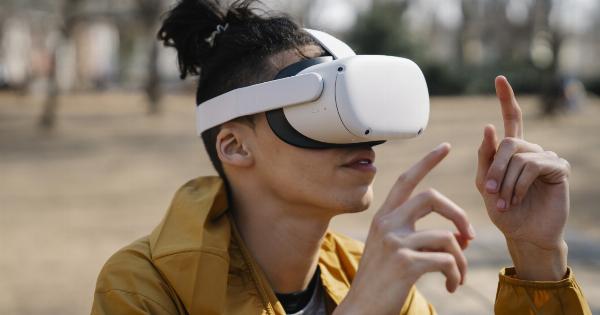Advancements in technology have always intrigued and fascinated mankind, offering us a glimpse into a future filled with endless possibilities.
An exciting breakthrough in neuroscience and wearable technology has now paved the way for the unveiling of a remarkable device – the brainwave-monitoring helmet. This cutting-edge invention has the potential to revolutionize various fields, from healthcare to gaming, enabling us to delve deeper into the mysteries of the human mind.
In this article, we delve into the intricacies of this groundbreaking helmet and explore its potential applications.
Understanding Brainwave Monitoring
Before we dive into the specifics of the brainwave-monitoring helmet, let us first gain a basic understanding of brainwave monitoring itself. The human brain is a fascinating organ that constantly generates electrical signals in the form of brainwaves.
These brainwaves are akin to a symphony, with each pattern representing different mental states and functions.
Brainwave monitoring involves the measurement and analysis of these electrical signals using EEG (Electroencephalography) technology. Until now, EEG devices have typically been bulky and complex, limiting their usage to controlled laboratory settings.
However, with the advent of this new helmet, brainwave monitoring is set to become more accessible and convenient.
The Brainwave-Monitoring Helmet: A Game-Changer
The brainwave-monitoring helmet, developed by a team of visionary scientists and engineers, is a compact and non-invasive device that offers real-time brainwave monitoring without sacrificing ease of use.
The helmet consists of multiple sensors strategically placed to capture and analyze the electrical activity of the brain. These sensors are intricately designed to ensure accurate and reliable data measurement.
One of the key advantages of this brainwave-monitoring helmet is its wireless capability.
Unlike traditional EEG devices that require cumbersome wired connections, this helmet employs advanced wireless technology, providing freedom of movement for the wearer. This breakthrough allows for a wider range of applications, enabling more natural and intuitive user experiences.
Applications in Healthcare
The potential applications of the brainwave-monitoring helmet in the healthcare industry are numerous. By offering real-time brainwave monitoring, medical professionals can gain valuable insights into the neurological conditions of patients.
This technology could prove particularly beneficial in diagnosing and treating conditions such as epilepsy, sleep disorders, and even mental health disorders like depression and anxiety.
The helmet’s wireless functionality could also facilitate remote patient monitoring. This means that individuals can receive medical attention and guidance from healthcare professionals without the need for frequent hospital visits.
Patients with chronic conditions or those who live in remote areas would especially benefit from this innovation.
Enhancing Gaming and Virtual Reality
Imagine a world where your thoughts can control the virtual landscape around you. With the brainwave-monitoring helmet, this is no longer a distant dream but a tangible reality.
The integration of this technology into the realm of gaming and virtual reality (VR) opens up mind-boggling possibilities.
Using the helmet’s real-time brainwave data, gaming experiences can be enhanced by allowing players to control characters and objects solely through their thoughts.
This level of immersion redefines the boundaries of interactive entertainment, creating an entirely new dimension for gamers worldwide.
Furthermore, the helmet’s wireless nature eliminates the need for cumbersome VR headsets and controllers, providing a seamless and unencumbered gaming experience.
This innovation has the potential to transform the gaming industry and redefine how we engage with virtual worlds.
Improving Cognitive Training
The brainwave-monitoring helmet holds promise in the domain of cognitive training as well. By capturing real-time brainwave data, the helmet could be used to develop personalized training programs that target specific cognitive functions.
Whether it be improving focus and concentration or enhancing memory and problem-solving skills, this helmet could revolutionize the way we approach brain training.
The ability to track and analyze brain activity during cognitive tasks allows for a more tailored and effective training regimen, boosting overall cognitive performance.
Potential Ethical and Privacy Concerns
As with any breakthrough technology, the brainwave-monitoring helmet raises important ethical and privacy concerns. The capturing and analysis of brainwave data tread into personal and potentially sensitive territories.
It is crucial that stringent privacy measures and guidelines are in place to protect individuals from potential misuse of their private brainwave data.
Additionally, the ethical implications of introducing brainwave monitoring into various domains should be carefully considered. Issues surrounding informed consent and the potential for unintended consequences must be addressed.
Society must ensure that this groundbreaking technology is used ethically and responsibly.
The Future of Brainwave Monitoring
The brainwave-monitoring helmet represents a significant leap forward in the field of neuroscience and wearable technology. Its potential to revolutionize various industries, from healthcare to gaming, is undeniable.
With the ability to provide real-time brainwave data in a compact and wireless design, this helmet holds immense promise.
Continued research and development in this field will likely lead to improved accuracy, comfort, and even greater possibilities.
As we edge closer to unlocking the mysteries of the human mind, the brainwave-monitoring helmet is at the forefront of this exciting journey.



























